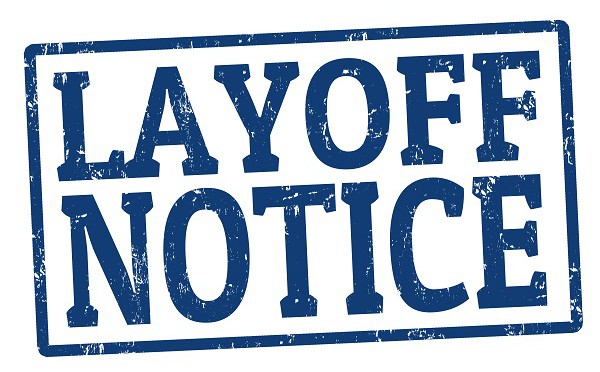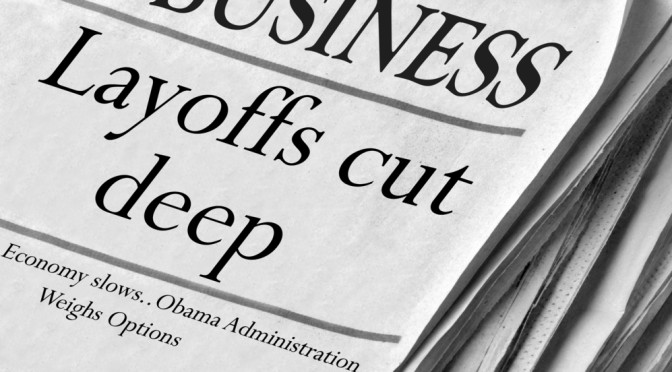If your company has had a layoff, you know that can be a real drain on morale and motivation for those still working at the company. Layoffs result in questioning the viability of the company and diminish hope for the future for those still at the firm. Layoffs alter the workload, add uncertainty, cause upheaval in working arrangements and can contribute to lessened commitment. In my previous post, I wrote about what leaders can do to help a company move on after a layoff.
But what about those that are still at the business after a layoff? What can you do?
Here are 7 ways for you to move on.
1. Be realistic
Usually many things conspire to create a situation where layoffs are necessary. There is typically no single thing or person to blame. It’s usually a combination of decisions, circumstances and market forces that combine to force the issue. So don’t waste a lot of time worrying about things in the past you can’t control. It happened. It’s over. Now the real issue is what you will do.
Layoffs most likely result from difficult business situations. These may situations not be rectified quickly. There may be additional pain before the business or market improves.
Remember the Stockade paradox and be willing to face the reality of where the company is but also express your faith that the company will prevail. Part of facing the reality is figuring out what needs to be done to stabilize, recover, grow and improve. Knowing the true reality but choosing to approach the task ahead with a positive mindset can help your attitude and commitment and improve your work atmosphere.
2. Assess your situation
After a layoff has occurred at your firm, it is a time to reflect on where you are in your engagement with the company and how that aligns with your larger career plans.
Assess the layoff in terms of your plans and goals. If the company is slowly shutting down the function you do then you need to plan appropriately. If you still see growth and upward advancement opportunity in future products and plans then it may be worth it to stay put and forge ahead. A layoff can narrow our focus to the company and our direct ability to get a pay check. However, a more thoughtful assessment of your overall career goals and how the current company helps you meet those is advisable.
3. Learn from what happened
Examine what caused the action to be necessary. Evaluate what your leaders say about the causes, mitigations and the future plans and strategies.
Ask key questions about the situation. What can you learn about the market or your product from what happened? What can you learn about your company from what happened? What can you learn from your skill set or your position or career from what happened? What can you learn about future potential and direction of the company and your function?
Learn all you can about the situation. Talk to your leaders and listen carefully to what they say. That helps you make more informed decisions in the future. Although painful, the situations surrounding a layoff should be viewed as a learning event for the whole company. Learn, and act to avoid the situation in the future.
4. Realize where true job security comes from
Your true security does not come from a job or a company or a title or a boss or leader. All of those will let you down at some point, guaranteed.
Your job security is in YOU!! It is in your own talents and abilities. Your true job security comes from using your capabilities to learn, adapt, grow, solve problems, create solutions and bring value to a company or business. If you concentrate on that, and are always learning and investing in your development, you will rarely be in need of a job because you will always have one.
5. Evaluate the opportunity
Every layoff also brings opportunities for employees to step up, take on new roles and responsibilities and handle new job functions. Watch for opportunities that present themselves and be ready to step up if the opening aligns with your goals and objectives. Taking a new opportunity can be a time to stretch yourself, learn new capabilities and enhance your experience base.
6. Focus on what you can control
It is good to remember those things you actually have direct control of. Focus on those. Your job, your tasks, your effort, your attitude, your responsibilities, your behavior, your quality. Redouble your efforts to do your responsibilities with excellence. Worrying about what you can’t control just wastes time, makes you angry and increases the feeling of helplessness about the situation. Resist the temptation to mope around and discuss what you can’t control with other mopers.
The best antidote to the malaise of the after-layoff time, is to focus on actions you can do and get busy. By doing this you help maximize your chances of success. To have hope for your future you have to amp it up. If your company has been losing the battle but you don’t amp up the fight you have no hope for victory. And if you do this, you will help influence others to do it as well.
7. Choose: renew your commitment or revise your resume
As an employees left at the company after a layoff you face a choice with three options:
- Stay and re-commit to work hard and do your part to improve the business
- Get out as quickly as possible
- Continue on in a zombie like state waiting for the next round
From my experience there are really only the first 2. At least those are the proactive choices.
If you decide that the circumstances warrant you to continue with the business then be all in. Re-commit to do as much as you can to move the business forward. Be an agent of change and improvement and influence others to do the same.
If you decide that you can’t continue there then don’t hang around and further stink up the place. Update your resume, find another job and move on. If you stay with a bad attitude, you will just pollute the rest of the folks with your bad karma, and slow down the whole recovery process for everyone.
Any way you slice it layoffs are tough.If you are an employee still at a firm after a layoff, apply these 7 principles and it can help you get back to moving the business forward sooner.

